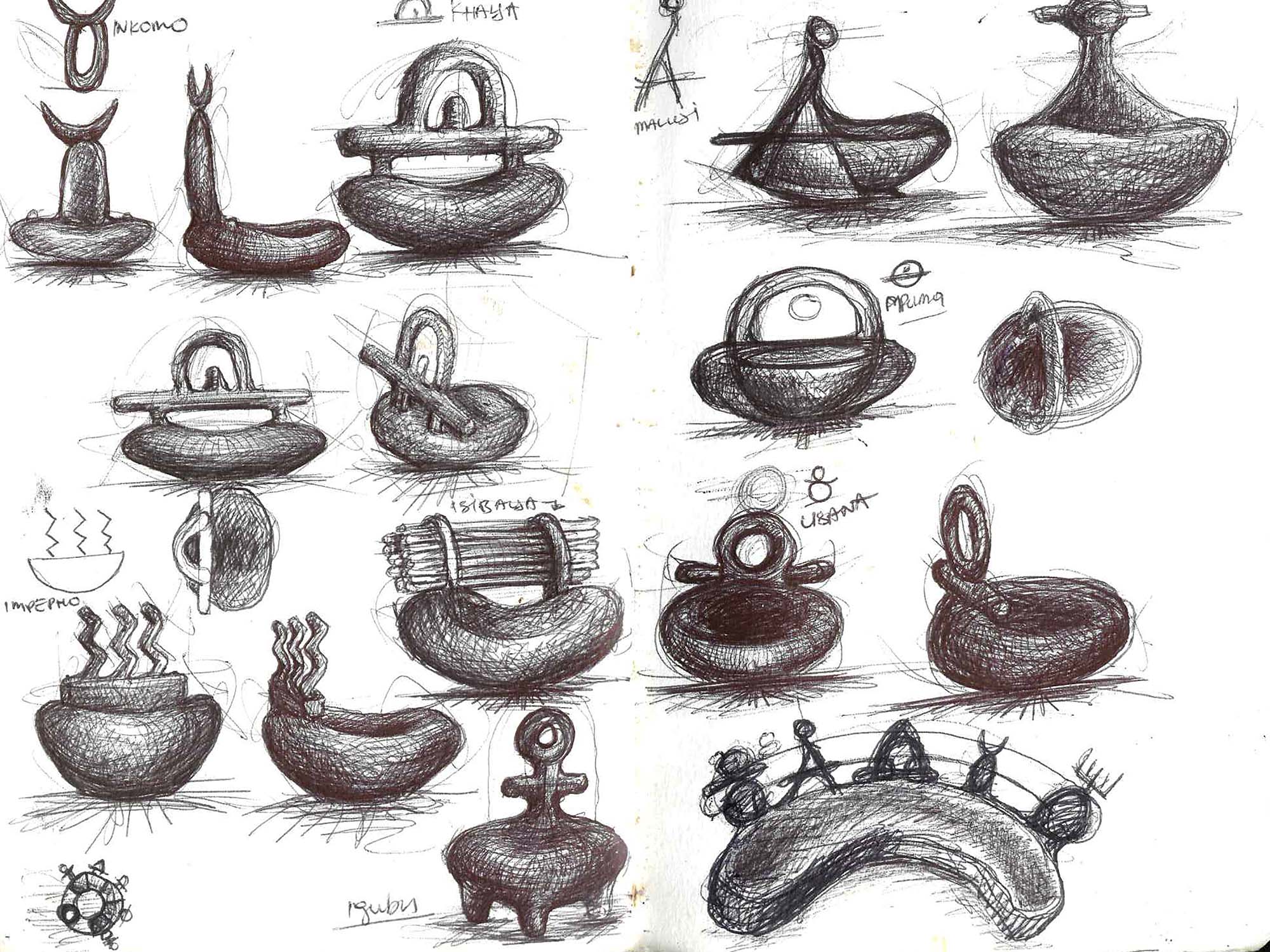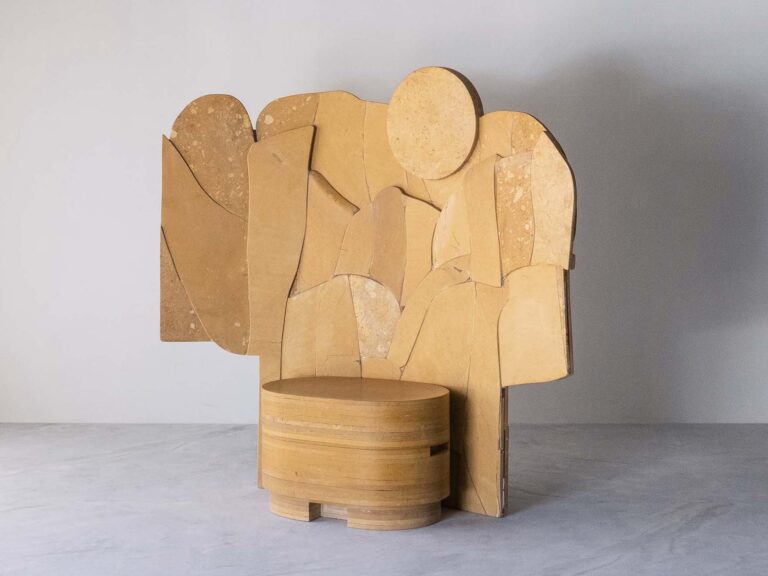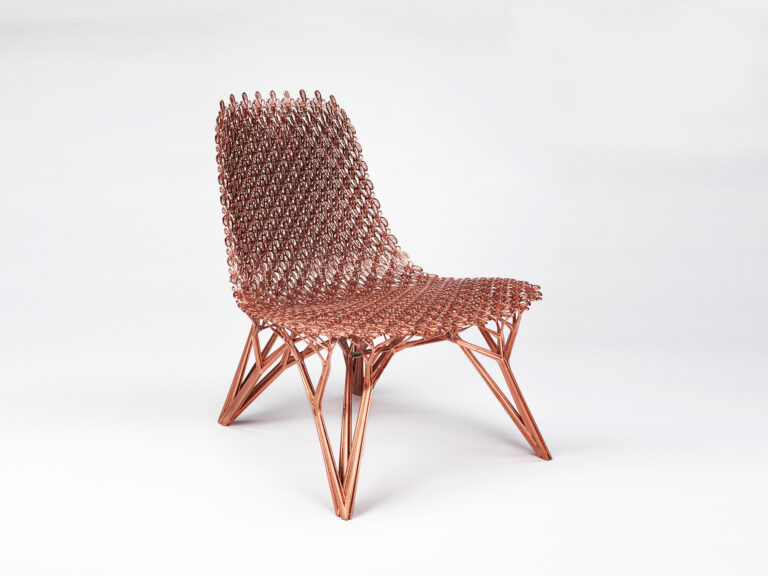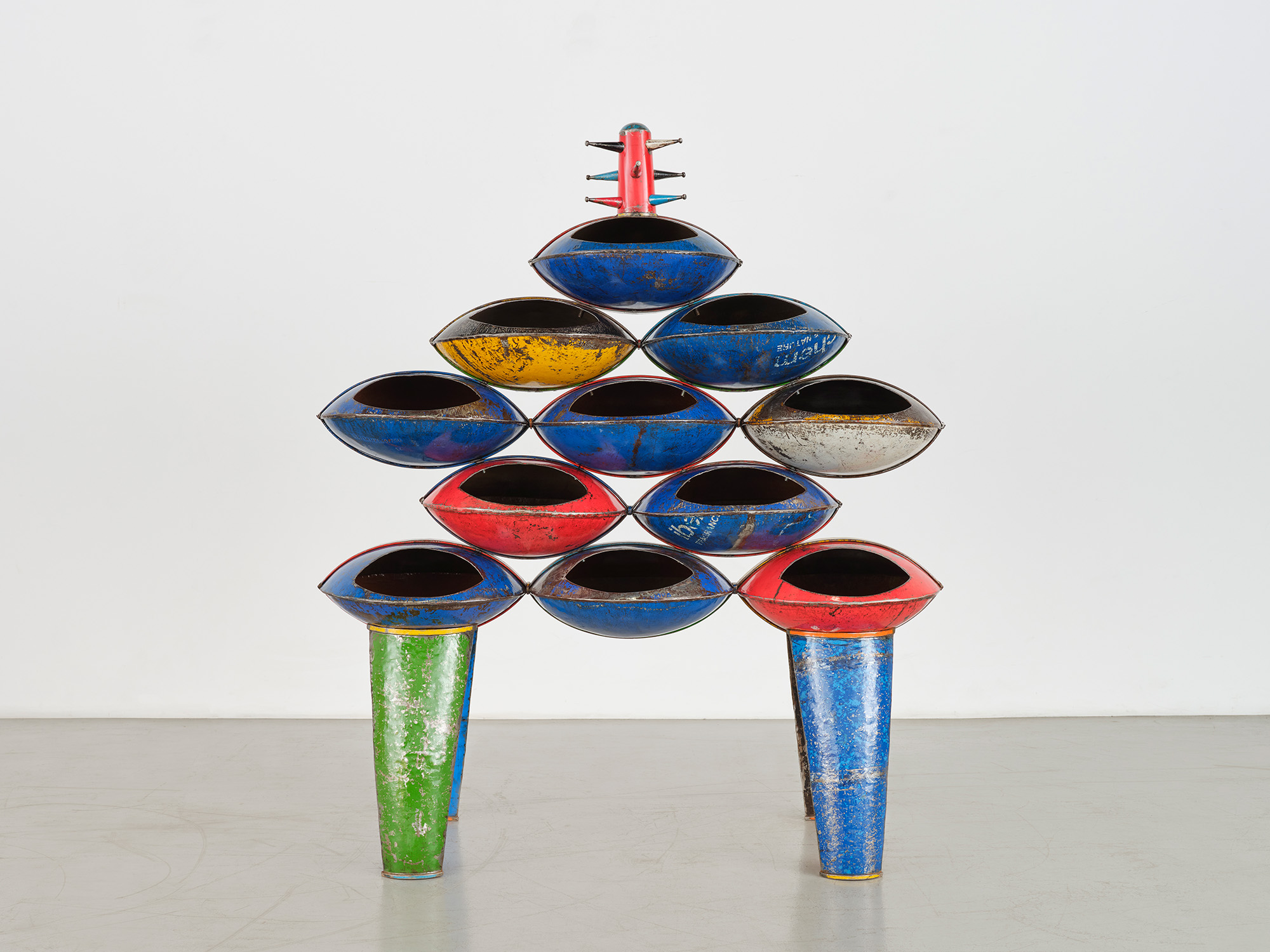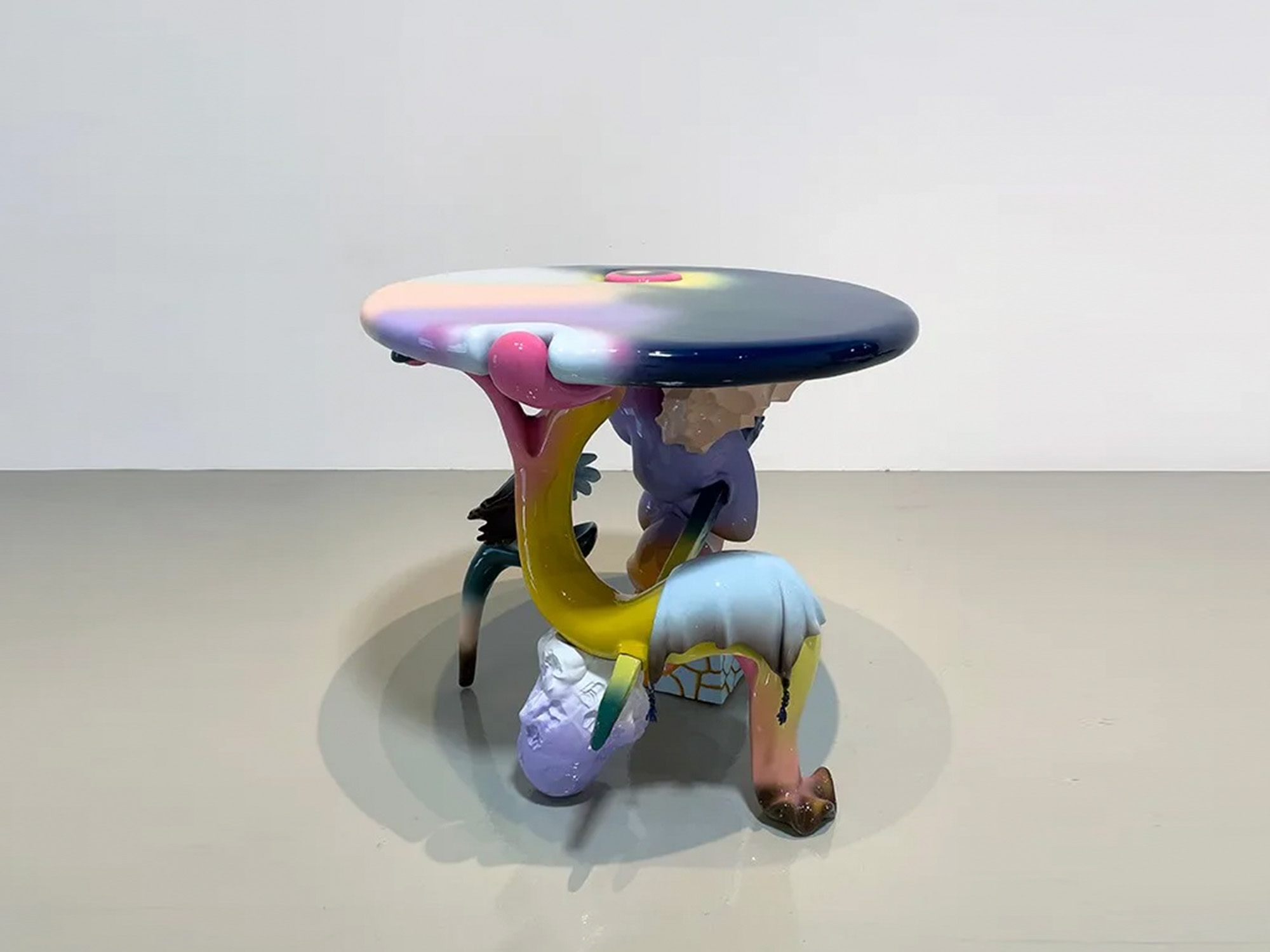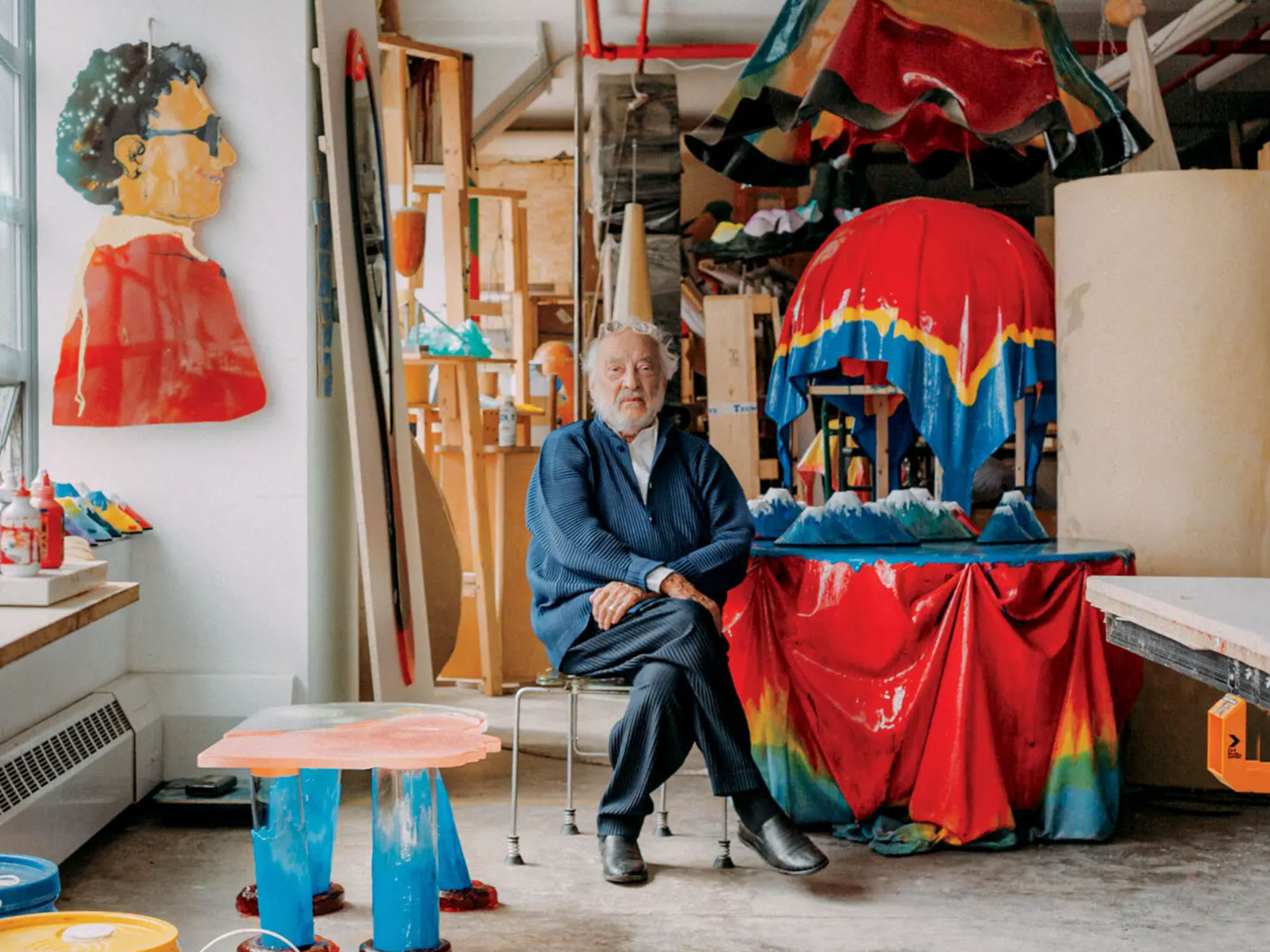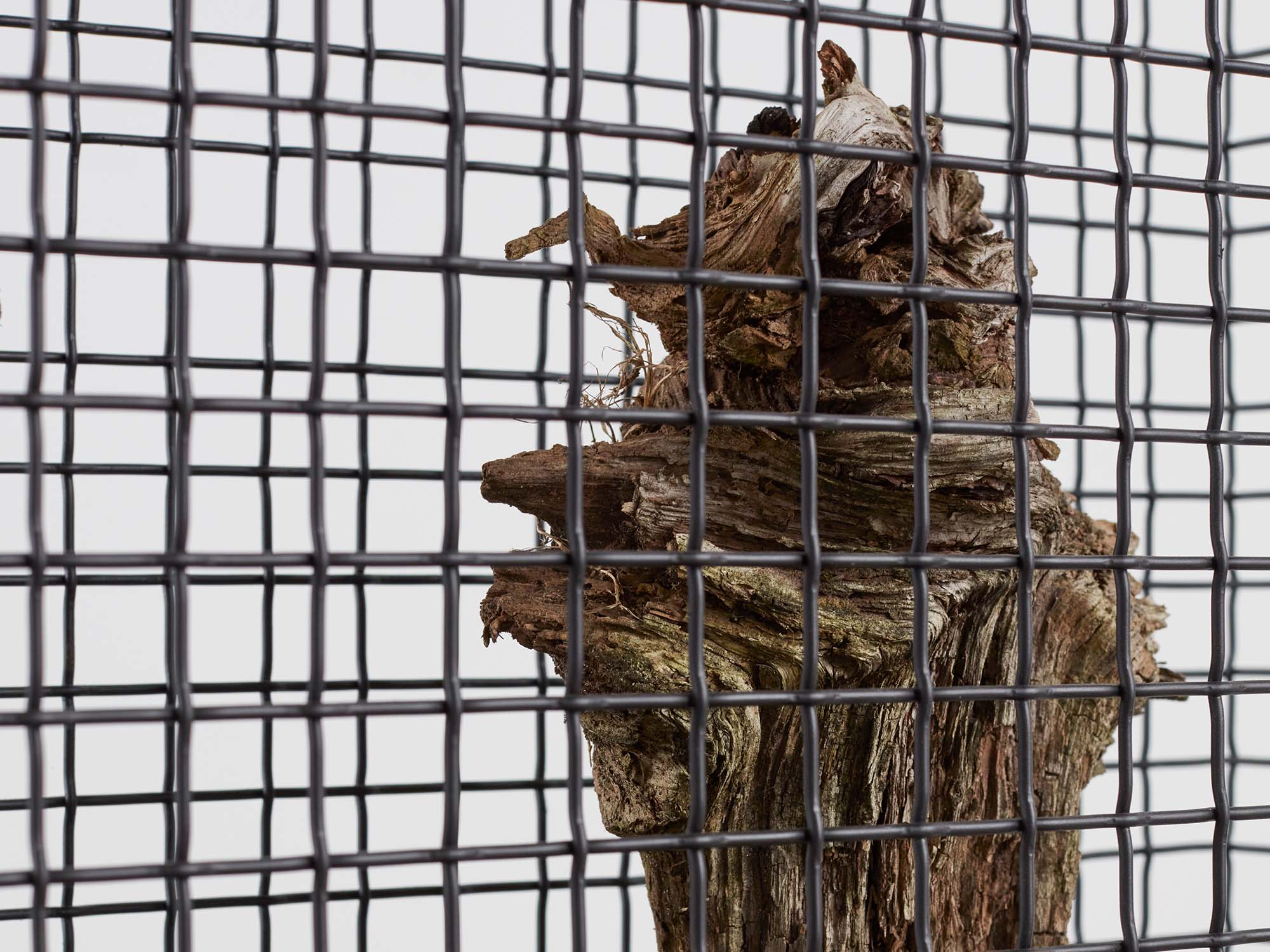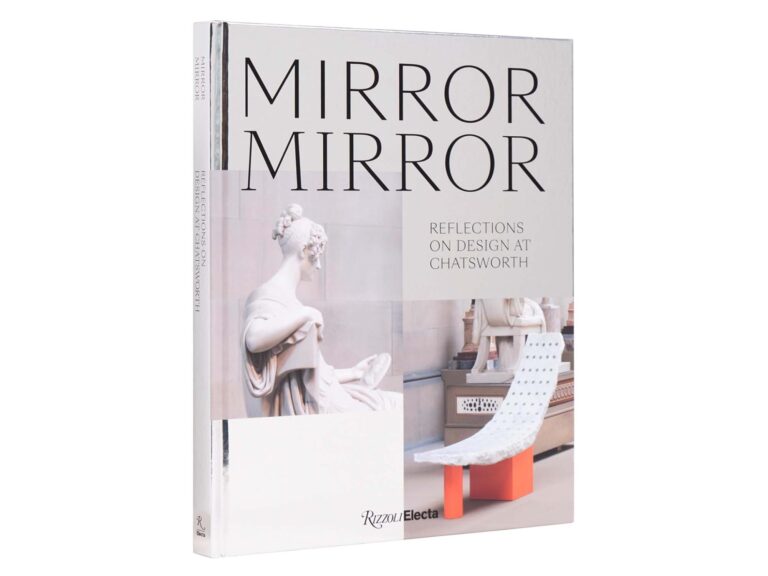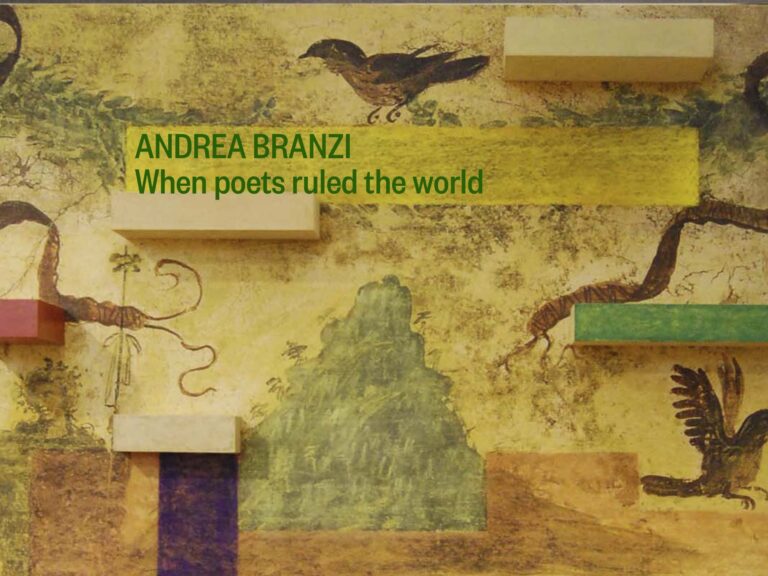By Glenn Adamson
Home – ikhaya. For Andile Dyalvane, it is not just the subject, not just the purpose of his art, but its ultimate destination. Even as he travels the world, he carries ikhaya with him, drawing on it as his source and feeding it in return. “Home is in essence familiarity,” Dyalvane has written. “Feelings of a greater extension of yourself.” Simple words, but like all that he has to say, profound. For they point to an understanding easily lost track of these days. A home truth: Individual expression is important only when a living community is there to receive it.
Dyalvane is from a place called Ngobozana, in the countryside of the Eastern Cape, in South Africa. In his growing-up years there, he had little experience of art, or even of fired ceramics; the beer pots and other clay vessels traditionally used by the Xhosa people had been displaced by plastic containers. He was taught to observe what was around him, though, and once put to the task of herding livestock, like the other boys of the village, he often found his attention wandering. His playgrounds were the dongas, eroded riverbeds where deposits of raw clay were exposed on the sloping banks. With this found material, he would shape little figures and herds of cattle, then leave them there to be washed away.
Already Dyalvane was forging a connection to his forebears, working with the very soil on which they had walked in generations past. But it would take him some years to “hear the whisper of the ancestors in the clay,” in his beautiful phrase. To give himself fully to home, he first had to leave it. Initially that meant Cape Town, where Dyalvane earned a diploma in fine art; he then went on to Port Elizabeth, to formally study ceramics. Early in his artistic development, his explorations gravitated to a recognisably Xhosa vocabulary; he ornamented the skin of his forms with patterns based on scarification, or bhaca. Traditionally this practice serves many purposes: healing, marking a certain stage of one’s life, clan identification. Once transposed to Dyalvane’s work, “it’s still about identity,” he says, “and a way of documenting: the language of the surface and the colours speak.”
A culminating moment in his development of this vocabulary was the exhibition Camagu (“I am grateful”), held at Friedman Benda in 2016. The first time he made work of large scale in his Cape Town workshop, the show also served as a platform for his use of symbolism, including a signature stamp that he uses to this day, and his distinctive methods of building. While initially coiled, as is typical of hand-built African ceramics, Dyalvane then cuts and reshapes his vessels, giving them sharply defined facets – literally making them articulate. This fragmentation of the continuous, circular rhythm of the coiled form transforms the pot, rendering it a disjunctive canvas for his imagery (reminiscent, perhaps, of the Cubists’ fragmentation of the object into multiple aspects). Each pot declares the importance of maintaining integrity in the face of disruption. The history of ceramics is thick with assertions of tradition, of course; but Dyalvane is not simply a revivalist, reiterating the values of the past. He is making those values his own, while acknowledging the difficulty of preserving cultural heritage, the struggle and indeed the innovation required to hold it together.
A breakthrough project for Dyalvane was his 2017 exhibition at Southern Guild, Idladla, in which he presented an impressive range of crested and crenellated forms. They were set out on plinths of stacked bricks, a vivid juxtaposition that suggested a rural occupation of the urban. Idladla is the isiXhosa word for grain silo, a collective architectural form: another sort of container, which holds the sustenance for the community (including its livestock) from one harvest season to the next. No metaphor could be more appropriate for Dyalvane’s work, which is itself a repository of essential cultural property, holding it in store for the future. Yet in this analogy, there is also a sense of tragic urgency: like bhaca scarification and the Xhosa language itself – kids these days use emoji fluently, but are losing traditional vocabulary – the use of grain silos is in decline in the Eastern Cape. Fewer and fewer people cultivate the land, or engage in the celebrations that used to punctuate the agricultural calendar. Many of Dyalvane’s generation and younger have migrated to the cities. Those who remain at home are left “dependent on continuous buying,” as he puts it, no longer living in a self-sufficient way. In this context, his work is a passionate and persuasive case for the ongoing relevance of ikhaya. “You’re sold the idea that the city is everything,” he muses, “but there’s so much wealth back at home.”
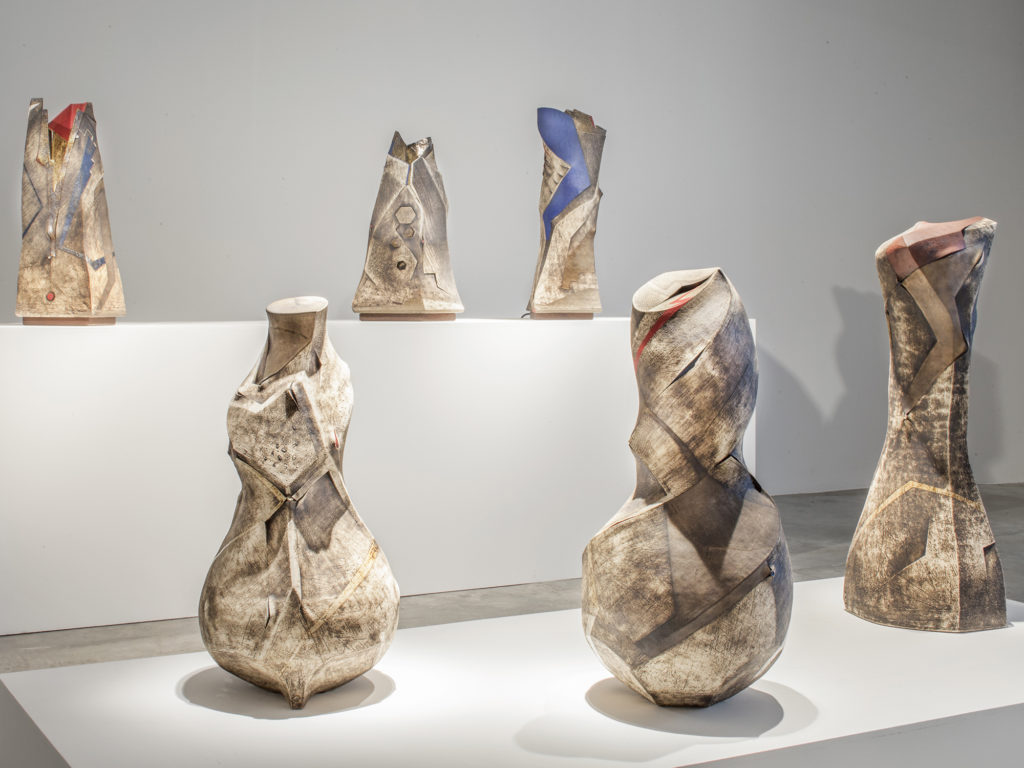
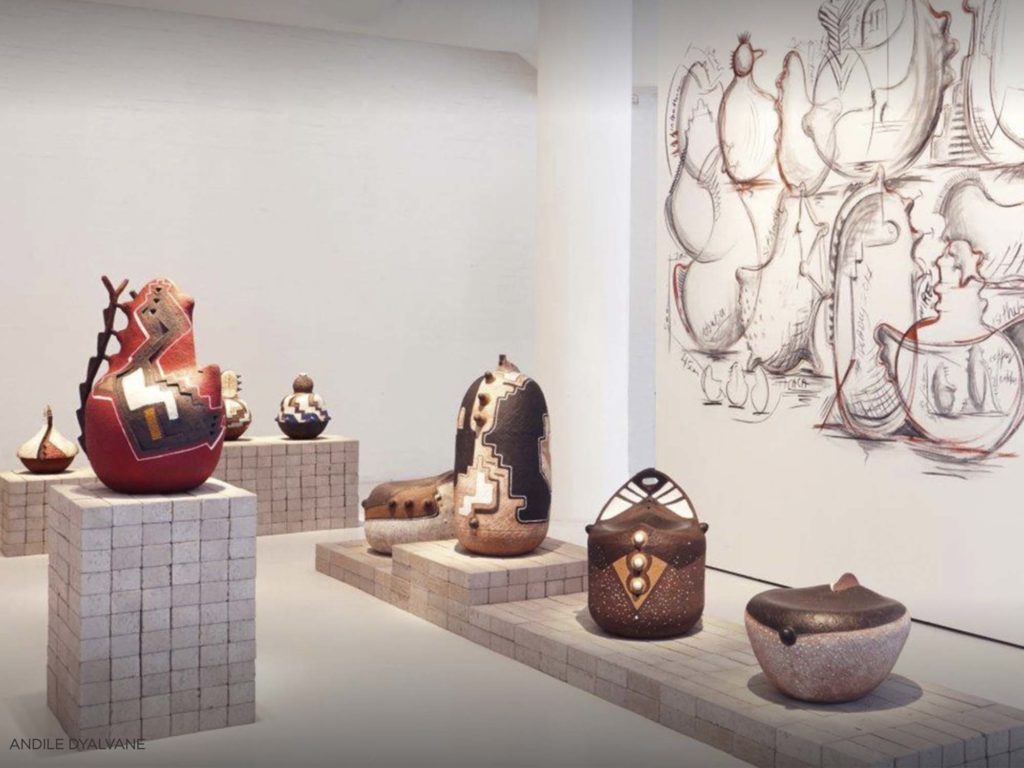
These ideas have coalesced with new power and resonance in iThongo, a series of 19 seating forms, each based on a Xhosa pictogram. (These symbols are no longer in wide use; Dyalvane adapted them from sources such as Credo Mutwa’s book Indaba, My Children, a collection of African folk tales first published in 1964.) The project exemplifies his deep sense of responsibility: “My duty is to use my platform, and my skills, and my gifts to let the next generation know what these practices were.”
It is telling, however, that Dyalvane made his way to this monumental achievement via places far from the Cape, far from South Africa. The story begins in the summer of 2019, when he conducted a residency at the famed Leach Pottery, in St. Ives, a beautiful town perched on the north coast of Cornwall. For two months he immersed himself in the place, using the studio’s clay, tenmoku and shino glazes, and gas-fired kilns. The pots he made reflect the legacy of Bernard Leach, the great traditionalist of 20th century British ceramics; indeed, it’s a shame that Leach did not live to see Dyalvane working at his studio, for few contemporary makers are more fully connected to the cultural “taproot” that he saw as necessary to the creation of vital work.
Yet what most fired Dyalvane’s imagination, during his residency, was not ceramics, but the Cornish landscape. His pots took on the shapes of the region’s geology: crags defining a ridgeline over the sea, sheaves of rocks slipping into one another’s crevices. He was also mesmerised by the standing stones that can be seen in Cornwall, remnants of ancient inhabitation, which echoed the circular configurations of traditional Xhosa gatherings. “I could sense the people that erected these stones,” Dyalvane says. “They danced, did rituals and celebrations on this land. They understood the celebration of rain, the solstice, the harvest, just as my own ancestors did.”
Had Dyalvane not had this experience in Cornwall, would he have developed his series of sculptural stools which convey even when unoccupied the idea of a sacred congregation, a shared current of energies? Would he have been able to design them in the way that he did, without first falling in love with East Asian ink painting – a medium he encountered in an exhibition in London (it was also avidly practiced by Leach), and then used to create the symbols for iThongo in his sketchbook? Who knows. But one thing is for certain: as much as the works reflect these far-flung influences, they took on their full meaning only once brought to Ngobozana.
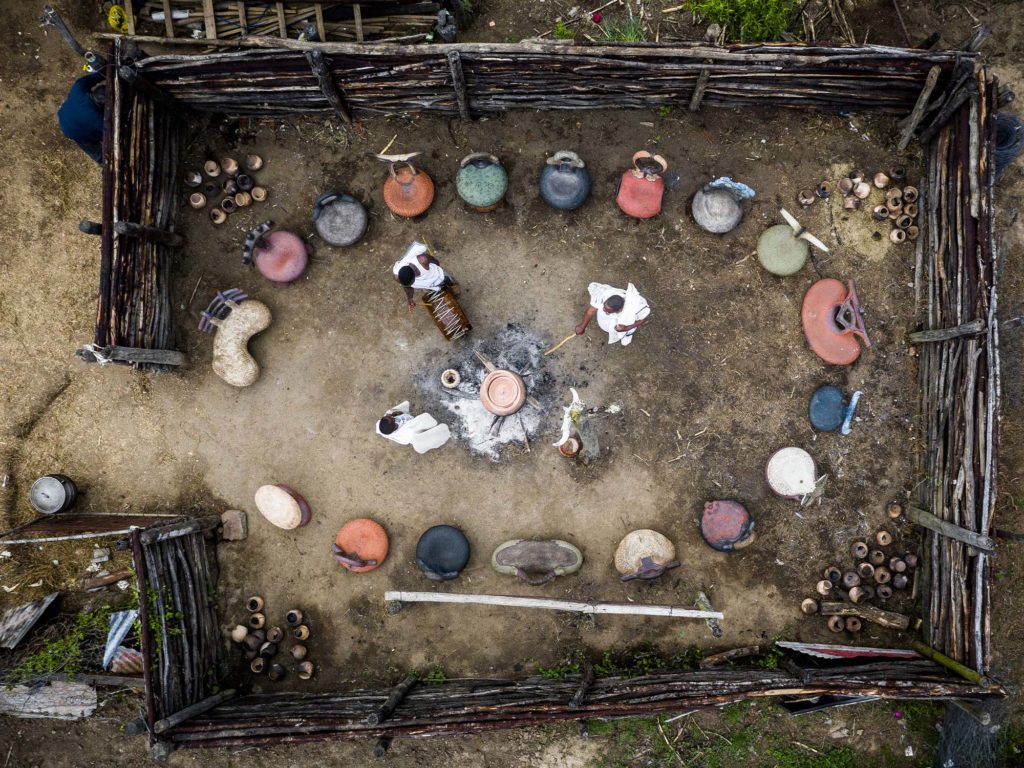
Dyalvane began shaping the forms while under lockdown, on the balcony of his small Cape Town apartment. Autumn was turning to winter, and with that change of the seasons came storms and rain. He kept right on working, “fighting the elements, but the energy that I got just from knowing that I was giving back to these pieces – it was intense.” It was an appropriately dramatic prelude to the main act, the transporting of the stools to his village. He knew that this pilgrimage was necessary; that the works would only be complete if they rested on his home ground, were used and understood by his family and people.
Indeed, if iThongo is best understood as a physical poem, then its last lines can truly be said to have been written in Ngobozana. Here, the works were spiritually cleansed by Dyalvane and his older brother, also a healer in the community, through the application of purifying herbs (isalawu, represented in one of the stools) and burning of sage (impepho). Even the accumulation of bits of Ngobozana soil on the works’ surfaces came to seem important: the low seats brought Dyalvane and his creativity right in contact with his origins, his home ground.
An especially important moment was the conveyance of one stool to the site of the old village, from which the people of Ngobozana were displaced, and where their ancestors are still buried. The work chosen for this important moment was the Shepherd (uMalusi) – which he describes as “a metaphor for all of us to prosper,” and a way of rectifying the traumas that the ancestors have gone through. This makes sense, given that his people have always been herders of livestock, but it is also tempting to see this stool as a kind of self-portrait, or at any rate, an allegory of Dyalvane’s experience. After all, this was his task, growing up. And he remains a custodian of his people. (This idea finds correspondence in Christian traditions, incidentally; the word “pastor” derives from the Greek term for a shepherd). “I’ve been chosen,” Dyalvane says matter-of-factly. “I am the one who is to restore dignity to my people. This is not a title I have given myself; the elders spoke.”
At time of writing, the iThongo seats are on display at Southern Guild. Next year, they will make their way to New York City, where they’ll be shown at Friedman Benda. None can say where fate may take them after that, but they are sure to carry their message with them. It is a message intended first and foremost for the people of Ngobozana, but one that we could all stand to meditate upon: “Remember who you are, remember what you have lost.” Dyalvane’s extraordinary inventive force derives from a past beyond easy reckoning, generation upon generation of creative souls like himself. In that sense, he is a great inheritor, a man who looks back for guidance and wisdom. Yet iThongo is also a project directed squarely at the future, that of Dyalvane himself, and all his people. “I promise you,” he says. “It’s a beginning.”
This essay was originally published in exhibition catalogue Andile Dyalvane: iThongo, Friedman Benda, New York, NY, April 2021.
